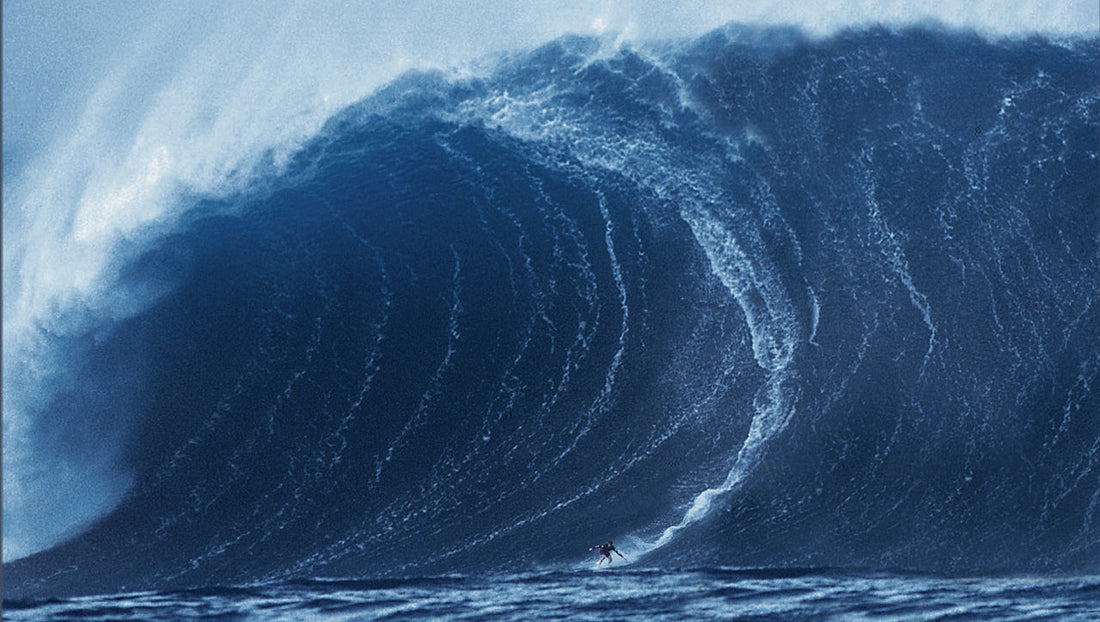The sport that separates the brave from the insane, Big Wave surfing is a particular discipline of the sport for those that like the idea of potential imminent death. While the risk might be severe, the glory that comes with it is incomparable to any other sport. So what is big wave surfing?
The Wave

While the name might seem self explanatory, what actually constitutes a "big wave" to a novice would most likely be significantly smaller than what an experienced surfer imagines. For the sake of parity across the surfing contests around the world, the Big Wave is given as anything the height, or in excess of, 20ft (6.3m).
For some perspective, that is the same height as a giraffe and almost as tall as 1 and a half London double decker buses. That's the smallest it's allowed to be, the largest recorded wave surfed was 78ft (23.7m) by Garrett McNamara which is greater than the length of a cricket pitch and over 1 and a half the height of the Hollywood sign.
The Board

In order to properly ride these waves the surfer needs a big wave tailored board called a Gun. These boards are designed with a narrow nose and tail to incorporate as much rail as possible for the wave. They also are much thicker than a shortboard, which would wobble at the speeds required to surf big waves. They range from 6'6 to 10ft but are a completely different beast from longboards.
Hazards

As alluded to at the beginning, the big wave surfing game is by no means an entry-level sport and requires proficiency at surfing along with utter fearlessness. If someone was to wipeout on a big wave, the force overhead could slam the surfer down 20 to 50ft underwater which is enough to disorientate bearings and struggle to see which way is up. After that there would be around 20 seconds to get to the surface before the next wave came, which would be the best case scenario as the surfer could easily be crushed against the bed or reefs in the first place.
The use of a leash is hotbed of discussion amongst big wave surfers who either believe it will limit their ability to get back to the surface or believe it's a fundamental necessity. There's no right or wrong, and really comes down what the surfer believes is safer. There are many cases of famous surfers, like Mark Foo, dying while big wave surfing which still causes controversy over safety precautions for this particularly dangerous sport.
Tow-In
In 1992, Laird Hamilton and Darrick Doerner introduced "towing in" to big wave surfing, which includes a jet-ski towing the surfer on their board providing enough momentum to get up to the speed of the wave before detaching away. This was a key factor in the changing of board sizes, as before the tow-in they needed enormous 12ft boards to get up to speed. Towing in did away with this and allowed for the use of much smaller boards. It's a controversial addition to the sport, especially amongst purists who believe people unconditioned can get themselves in trouble very easily while environmentalists abhor the use of PWC motors in the water unnecessarily.
If you like this post, check out the rest on our blog. Eddie would go.

